There’s nothing quite like venturing into the great outdoors, immersing oneself in the wilderness, and realizing you forgot to pack the marshmallows for s’mores. Ah, the joys and perils of backpacking. Welcome, brave adventurer, to the exciting world of camping – a place where you can find yourself, lose yourself, and quite possibly accidentally roll your sleeping bag into a patch of poison ivy.
There’s a reason why we’ve chosen to embark on this enlightening (and, hopefully, entertaining) journey through the annals of backpacking wisdom. You see, the call of the wild is potent, luring in unsuspecting city-dwellers with the promise of lush greenery, breathtaking views, and the kind of silence you can only dream of when your neighbor decides to mow their lawn at 7 AM.
However, before you can answer that call, there’s a small matter of preparation to discuss. No, we’re not talking about watching every survival reality show you can find – we mean the real deal. The practical know-how, the tricks of the trade, the kind of stuff that will transform you from a doe-eyed novice to a seasoned (albeit slightly mud-covered) wilderness wanderer.
In this backpacking tips and tricks guide, we’ll dive into everything from picking the perfect gear (spoiler: it’s not the one with the most fashion appeal) to the fine art of interacting with wildlife (pro tip: squirrels are cute, but they’re not interested in sharing your dinner). So, strap on your hiking boots, pack your sense of humor, and let’s take our first step into the wild – metaphorically speaking, of course. Physical steps will come later, and they’ll likely be uphill. Don’t say we didn’t warn you.
Why Go Backpacking?
Have you ever thought about escaping the concrete jungle for the real one? Or perhaps swapping the rat race for a race to find the perfect marshmallow-roasting stick? If so, backpacking might just be your ideal getaway. But let’s delve deeper and explore why you would want to swap your comfy bed for a sleeping bag and a patch of dirt.
First up is the alluring prospect of connecting with nature. Nothing can quite match the serenity of waking up to the chirping of birds instead of your alarm clock’s blaring siren, or the sight of a sky ablaze with stars, unspoiled by city lights. The feeling is so exhilarating that you may even forget about the pebble that somehow found its way into your boot.
Disconnecting from technology is another reason people are drawn to backpacking. In the digital age, we’re almost always on our phones, laptops, or some other device. (Don’t deny it – we know you’ve taken your phone to the bathroom more times than you’d care to admit.) But out there in the wilderness, the only tweets you’ll hear are from real birds, and the only ‘cookies’ you’ll encounter are the ones you packed for your trip. And trust us, you won’t miss your phone when you’re marveling at a glorious sunset or a deer crossing your path.
And then there’s the classic reason for embarking on a wilderness adventure: the time-honored tradition of “finding oneself.” Yes, it might sound like something out of a cliché-ridden movie, but there’s truth to it. When you’re navigating a tricky trail or setting up a tent in dwindling daylight, you’ll discover reserves of strength, patience, and determination you never knew you had. Plus, there’s nothing quite like getting lost in the woods to help you find yourself – just don’t take this advice too literally.
Now that we’ve covered some compelling reasons to go backpacking, you’re probably eager to hit the trails and start your adventure. But hold your horses (and by horses, we mean backpacks). Before we set out, there’s a lot more ground to cover – like what to pack, how to choose a campsite, and why it’s important not to challenge a moose to a staring contest. Yes, we’re serious. Stay tuned, and keep those hiking boots on standby. We’re just getting started!
Choosing the Right Gear
So, you’ve decided to become one with nature. Congratulations! Your initiation into the League of Extraordinary Wilderness Wanderers is almost complete. But before we can officially induct you, we need to ensure you’re kitted out with the right gear. And no, we’re not talking about Gucci camping collections or a solar-powered espresso machine.
The first step on this gear-gathering journey is choosing the right backpack. Picture this: You’re deep in the wilderness, miles from the nearest Wi-Fi signal, and suddenly realize you’ve packed everything but the kitchen sink, and it feels like you’re carrying an elephant on your back. To avoid this scenario, you’ll need a backpack that is just right. Goldilocks had the right idea, although she was dealing with porridge temperatures and bear beds. In this case, your backpack should be roomy enough to hold all your necessities but not so big that you’re tempted to bring your whole wardrobe. Remember, when in the wild, fashion faux pas are not only allowed but encouraged.
Next up: your tent. Contrary to what you might think, a good tent is about more than just the color coordinating with your hiking boots. You’re looking for something sturdy, waterproof, and easy to set up, even in the dim glow of a campfire. After all, it’s going to be your home away from home. Plus, trust us when we say that a leaking tent in the middle of a downpour is about as much fun as a squirrel raiding your snack stash.
Speaking of your night-time comfort, the sleeping bag is your ticket to a good night’s sleep under the stars. Sure, the ground might be a bit harder than your memory foam mattress back home, but a good sleeping bag can make all the difference. It’s essentially a portable hug, offering warmth and comfort after a day of trailblazing.
Finally, let’s chat about something that often slips one’s mind but is essential – toilet paper. Yes, you read that right. Nature might call in more ways than one, and when it does, you’ll want to be prepared. Because let’s be honest, nobody wants to be that person who used poison ivy in a moment of desperation.
So, there you have it – the essentials of backpacking gear, in all their glory. And remember, the goal here isn’t to become a walking outdoor gear advertisement. It’s about being comfortable, safe, and prepared – so you can fully enjoy the wonders that await in the great outdoors. Now, let’s venture forth into the realm of packing and prepping – because who knew you’d need a degree in Tetris to be a camper?
Packing Like a Pro
Okay, so now you’re kitted out with the best gear and ready to hit the trails. But, hold up. We’ve got another challenge for you: packing. It’s not as simple as throwing everything into your bag and hoping for the best (although we’ve all been tempted to try that approach from time to time).
Your goal is to pack light but right. You’re going to need to channel your inner Marie Kondo and only take what truly sparks joy – and by joy, we mean what you’ll realistically need to survive and enjoy your trip. Let’s just say it outright, leave your collection of antique thimbles at home.
First, remember the ‘leave no trace’ principle. This means that what you take into the wilderness, you should take out. As a responsible camper, you want to keep the great outdoors great, so future generations can also enjoy the joy of finding a stick that’s just right for marshmallow roasting.
Now, let’s discuss the backpack’s weight distribution. You don’t want to end up leaning backward like a startled meerkat because all your heavy gear is at the top of your pack. Instead, pack your gear with the aim of maintaining your center of gravity. Heavier items should be packed towards the middle and closer to your back, while lighter items should be packed on the top and bottom. It’s like a game of Tetris, but your high score equates to comfort on the trail.
As for clothes, think layers and practicality, not fashion statements. This isn’t the red carpet; it’s the green forest. Your clothes should keep you warm, dry, and protected from the elements. Remember, while you might start the hike in sunshine, weather can change quicker than a chameleon on a rainbow, so be prepared. And just a quick note on socks – always bring more than you think you need. There’s nothing worse than stepping in a creek and realizing you’ve exhausted your sock supply.
To conclude, let’s address the elephant in the room, or rather, the hairdryer in the backpack. Ask yourself, do you really need it? The wilderness is not the place for maintaining your perfect coiffure. In fact, the ‘wild and windswept’ look is all the rage out there. So, unless your hairdryer doubles as a distress flare or bear deterrent, consider leaving it behind.
All right, future wilderness wanderer, you’re one step closer to being ready to conquer the trails and pitch the perfect camp. But before you bolt out the door, let’s cover a few more topics, like how to choose your route and campsite, and why you shouldn’t high-five a cactus, no matter how friendly it seems.
Choosing Your Route and Campsite
Right then, you’re kitted out and packed up. The wild is calling, and you’re almost ready to answer that call. But wait, where exactly are you going? Choosing your route and campsite is a bit like choosing a new Netflix series – it needs to suit your tastes and capabilities, and no one enjoys a cliffhanger that’s too intense.
First, you need to understand your physical limits. Sure, conquering Mount Everest might sound like a great story to tell at parties, but if you’re new to backpacking, you might want to start with something a bit less… vertical. Choose a route that’s appropriate for your fitness level and experience. Remember, backpacking is about enjoying the journey, not just surviving it.
Next up, your campsite. It’s not all about the ‘gram-worthy view, you know. Safety and practicality should be your primary concerns. Look for a flat area that’s free from hazards such as dead trees (widow-makers, as they’re cheerfully called), away from bodies of water (mosquitoes, anyone?), but close enough so you can fetch water easily. You should also be mindful of the impact on the environment – remember that ‘leave no trace’ principle we talked about earlier.
Finally, let’s chat about wildlife. There’s a good chance you’ll have some furry, feathery, or scaly neighbors during your camping trip. And while it might be exciting to spot a deer or an eagle, some wildlife encounters are less desirable. Do some research about the wildlife you might encounter, how to store your food safely, and what to do if you come across a bear, snake, or even a moose. Spoiler alert: Running is rarely the right answer, and challenging them to a game of poker doesn’t work – they’re notorious cheaters.
And there you have it – the ABCs of route and campsite selection. Like a good boy scout, the key here is to always be prepared. Speaking of being prepared, our next section is going to dive into the exciting world of campsite etiquette and safety – or as we like to call it, how to be a good woodland citizen and not end up on a moose’s most-wanted list. Stay tuned, adventurer, we’re almost there!
Campsite Etiquette
So, you’ve found your dream trail, selected the perfect campsite, and you’re ready to commune with nature. But before you rush off, there’s another topic we need to discuss: campsite etiquette. Yes, even in the wild, there are rules to follow. But don’t worry, none of them involve knowing which fork to use for the salad at a fancy dinner.
Rule number one: the good neighbor policy. No, this doesn’t mean you have to lend your camping stove to the chipmunks. Instead, it’s about respecting the peace and tranquility of the outdoors. This isn’t the place for a rave (or even an acoustic jam session). Keep noise to a minimum so as not to disturb other campers or the wildlife. Remember, the soundtrack to your wilderness experience should be chirping birds and rustling leaves, not blasting bass beats.
Now, let’s talk food. Yes, it’s essential, but it also can be a wildlife magnet. Make sure you store your food securely and out of reach of any curious critters. And sorry to break it to you, but no, the squirrels are not trying to be your friend, they just want your trail mix. Store food in a bear canister or hang it from a tree, away from your sleeping area. This way, you’re not issuing an open invitation to a midnight bear party at your campsite.
Last but not least, let’s discuss cleanliness. No, we don’t mean taking a shower (although it’s appreciated), but rather keeping your campsite clean. Pack out what you pack in, don’t leave trash around, and definitely don’t burn it in the campfire. Basically, treat your campsite like your grandma’s living room – keep it spotless and treat it with respect.
Following these basic rules of campsite etiquette will ensure you have a fantastic and harmonious backpacking experience. Plus, it will make you a beloved figure among your fellow campers and the woodland creatures alike. Now, let’s take a detour to safety town – because nothing ruins a backpacking trip like getting lost or making a bear your sworn enemy. Stay with us; we’re almost at the finish line!
Campsite Safety
Now, to end our adventurous ramblings on a serious note: safety. As the saying goes, “It’s all fun and games until someone gets chased by a bear.” Alright, maybe that’s not an actual saying, but the sentiment holds. Safety should be your top priority when backpacking.
Let’s start with navigation. Unless you fancy becoming the next Tarzan or Jane, getting lost in the wilderness isn’t ideal. It’s crucial to have a reliable map and compass and know how to use them. Sure, GPS is great, but don’t solely rely on technology – it has a tendency to conk out when you need it most. Plus, a compass doesn’t need batteries or a good signal, and it’s never tried to direct anyone into a lake (we’re looking at you, GPS).
On to wildlife interactions. Remember, you’re a visitor in their home, so respect the local residents. This includes not feeding or getting too close to them. In the case of larger wildlife like bears, wolves, or moose, familiarize yourself with what to do if you encounter one. Trust us, it’s better to know in advance than try to Google “what to do if a bear charges” while said bear is charging.
Next up, fire safety. There’s something magical about sitting around a campfire, roasting marshmallows, and sharing spooky stories. But, let’s ensure the only thing that goes up in flames is the firewood, not the entire forest. Always follow local fire regulations, never leave a fire unattended, and completely extinguish it before going to bed or leaving your campsite.
And lastly, tell someone about your plans. Give a friend or family member your itinerary, including where you’re going and when you plan to return. This way, if you’re overdue, someone will know where to start looking. Think of it as your backup plan, not unlike leaving breadcrumbs, but much more effective and less likely to be eaten by birds.
Now, look at you, all prepped and ready to conquer the wild! You’re about to embark on an adventure that promises not only magnificent views and memorable encounters but also a chance to rediscover yourself and your connection with nature. So go ahead, step into your hiking boots, shoulder that well-packed backpack, and hit the trails. Happy backpacking, brave adventurer, and may the squirrels be ever in your favor!
Embracing the Unexpected
The final layer of wisdom we’ll bequeath upon you today is perhaps the most important: embracing the unexpected. Backpacking, like life, is full of surprises. They say variety is the spice of life, and when you’re in the wilderness, Mother Nature is the head chef with a full spice rack at her disposal.
Dealing with Bad Weather: How to Become a Mud-Wrestling Champion
Now, if there’s one thing you can’t control, it’s the weather. One minute it’s all sunshine and butterflies, the next you’re auditioning for a role in a real-life version of “Singing in the Rain.” The trick here is to prepare for the worst, but hope for the best. Waterproof clothing, sturdy footwear, and a resilient spirit can all help you deal with inclement weather.
And remember, rain can add a touch of adventure to your trip. Hiking through the mud can feel like an epic quest and give you legitimate bragging rights as a mud-wrestling champion. Plus, there’s something soothing about the sound of rain on your tent as you snuggle in your sleeping bag (just make sure it’s properly pitched to avoid unwanted indoor puddles).
Coping with Loneliness or Fear: No, Those Aren’t Bigfoot’s Footsteps You Hear
Heading out into the wilderness, especially if you’re going solo, can be a bit daunting. Every rustle, hoot, and howl can make your imagination run wild. Before you know it, you’re convinced Bigfoot is outside your tent deciding which sauce to use for his midnight snack.
Firstly, remember that fear is often born out of the unknown. Learning about the wildlife and sounds of the wilderness can help you feel more comfortable. And as for loneliness, embrace it. Enjoy the peace and solitude. You’ll find that you’re never truly alone – the forest is teeming with life, and the sounds of nature can be a soothing company.
Understanding and Enjoying the Unpredictability of Nature: Who Needs Netflix When You’ve Got Shooting Stars?
One of the greatest joys of backpacking is the unpredictability of nature. Sure, you might have planned your route and studied your maps, but the wilderness always has a few surprises up her sleeve. Maybe you’ll find a stunning waterfall not listed on the map, have an unexpected wildlife encounter (from a safe distance, of course), or be treated to a meteor shower performance that beats any Netflix show.
In the end, the unexpected moments often turn into the most memorable parts of your backpacking trip. So embrace them, enjoy them, and let them remind you of the wonder and thrill of being out in the wild.
And with that, you’re officially ready to head into the great outdoors and begin your backpacking journey. Remember, every great adventurer started with their first step. So lace up your boots, should that backpack, and let the adventure begin!
Conclusion
Well, look at you! You’ve trekked through this entire article, braved the twists and turns, and now stand at the summit of knowledge, ready to conquer the wilderness.
Recap of the Key Takeaways: Your Cheat Sheet to Becoming a Backpacking Pro
Here’s a quick recap of the essentials, a cheat sheet if you will, to remind you of what you’ve learned:
- Get the right gear: Trust us, a good tent can be your best friend out there.
- Learn to pack smart: It’s like Tetris, but your high score results in a comfortable hike.
- Choose the right route and campsite: Remember, it’s not just about the ‘gram.
- Follow the rules of campsite etiquette: Yes, even the squirrels will appreciate it.
- Always prioritize safety: Mother Nature doesn’t have guardrails.
- Take care of your gear post-trip: Treat it well, and it’ll return the favor.
- Embrace the unexpected: Unpredictability is part of the package, and it’s what makes it fun!
Final Words of Encouragement and Humor: Remember, Even Bear Grylls Had a First Day
As you embark on this journey, it’s important to remember that everyone, even the legendary Bear Grylls, had a first day, a first trip, a first “Oh no, I forgot the tent poles” moment. You’ll learn, you’ll adapt, and you’ll find your rhythm. And hey, if things get tough out there, just remember: no one can hear you sing off-key in the wilderness!
Encouragement to Enjoy the Process: You’re About to Write Your Own Epic Adventure Tale
Above all, this is your adventure. It’s your story to write. It won’t be exactly like you planned, and that’s a good thing. The best parts of backpacking trips are often the things you didn’t expect, the challenges you overcame, the beauty you discovered along the way.
So step out into the wild, my friend. Embrace the journey, the triumphs, the challenges, and even the blisters. Remember, every epic tale needs a hero. It’s time to start writing your story.
Now, go on. The wilderness is waiting, and as we’ve learned, she doesn’t like to be kept waiting. Happy trails, adventurer!
Resources
As your newly self-appointed guide to the wilderness, we’re not just leaving you at the trailhead. Here are some additional resources to help you continue your journey of learning and preparation with some additional backpacking tips and tricks.
Recommended Books, Websites, and Courses for Further Learning
Books:
- “The Backpacker’s Field Manual” by Rick Curtis: A comprehensive guide covering everything from planning your trip to navigation and campcraft.
- “A Walk in the Woods” by Bill Bryson: Not a how-to guide, but a humorous tale of Bryson’s hike along the Appalachian Trail that will provide laughs and insights into the backpacking world.
Websites:
- REI Expert Advice: A treasure trove of articles, gear lists, and guides on everything related to outdoor adventures.
- AllTrails: This website (and app) allows you to discover and plan your routes, complete with reviews and photos from fellow hikers.
Courses:
- REI Outdoor School: Offers classes on backpacking skills and outdoor preparedness.
- NOLS Wilderness Medicine: If you’re interested in getting more intensive training, consider a wilderness medicine course to learn how to handle potential medical emergencies in the wild.
Contact Information for Relevant Outdoor and Camping Associations
- American Hiking Society: A national nonprofit organization dedicated to promoting and protecting America’s hiking trails, their surrounding natural areas, and the hiking experience.
- Leave No Trace Center for Outdoor Ethics: An international organization that protects the outdoors by teaching people how to enjoy it responsibly. They provide education, research, volunteer opportunities, and more.
- National Park Service: Your go-to source for information about visiting America’s National Parks.
- National Forest Service: If you’re heading into a national forest, check out this site for maps, guidelines, and helpful information.
Remember, learning is an ongoing process, especially when it comes to something as vast and variable as the great outdoors. Use these resources to continue your journey, but don’t forget the best teacher: experience. So get out there and start exploring!

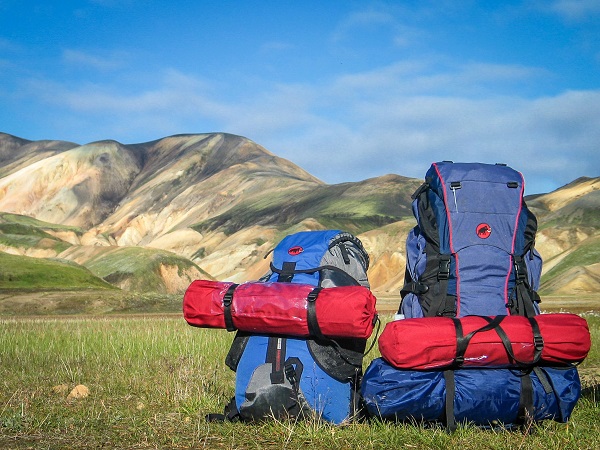
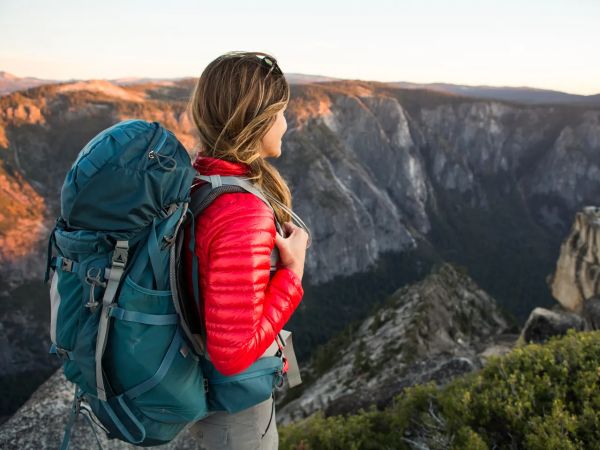
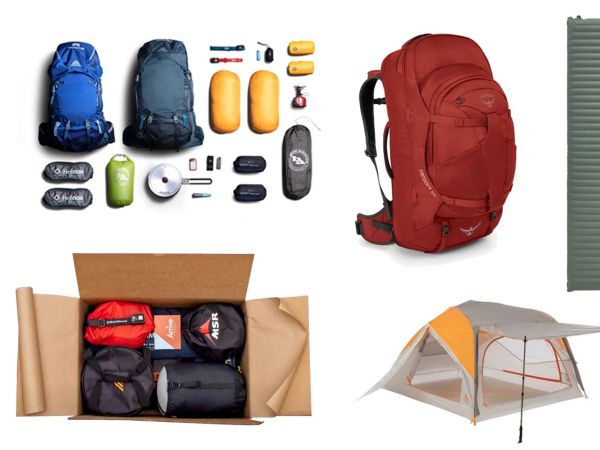

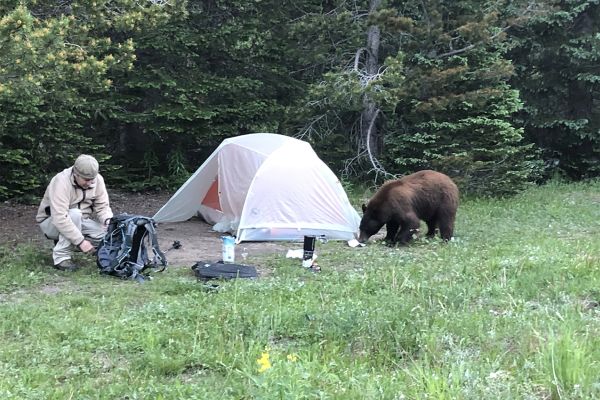
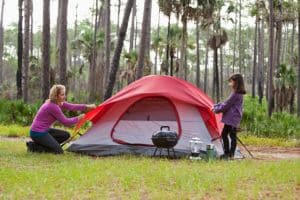
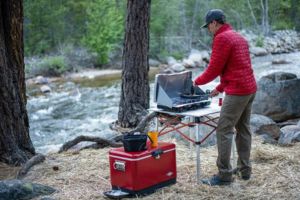
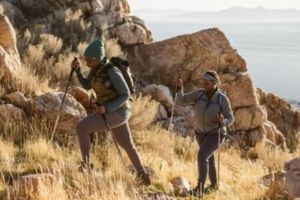
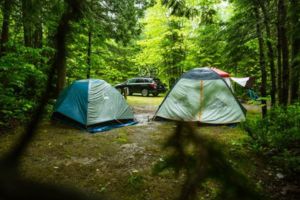
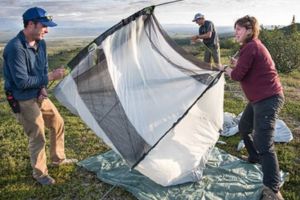
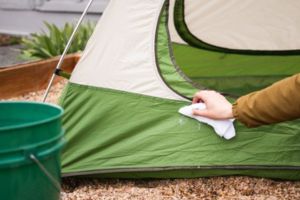
Leave A Comment